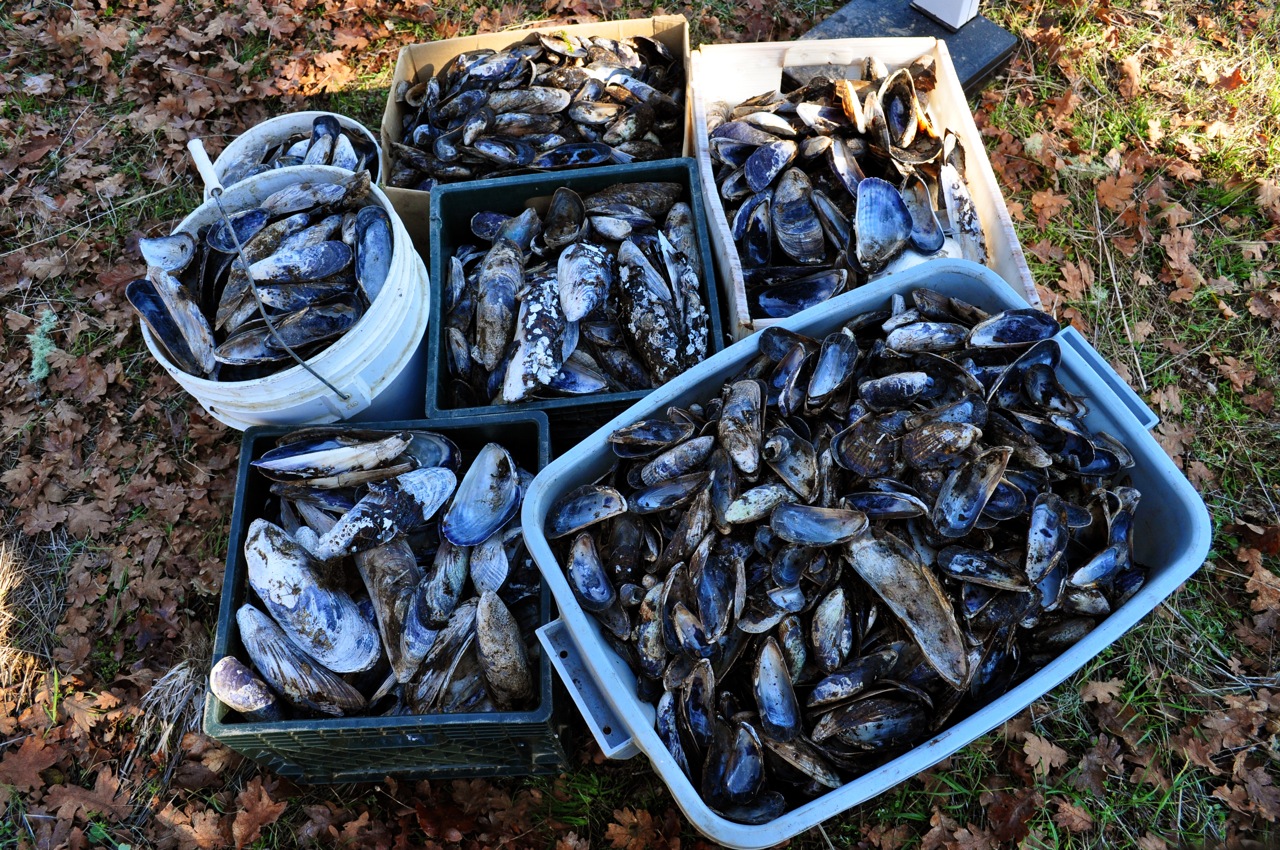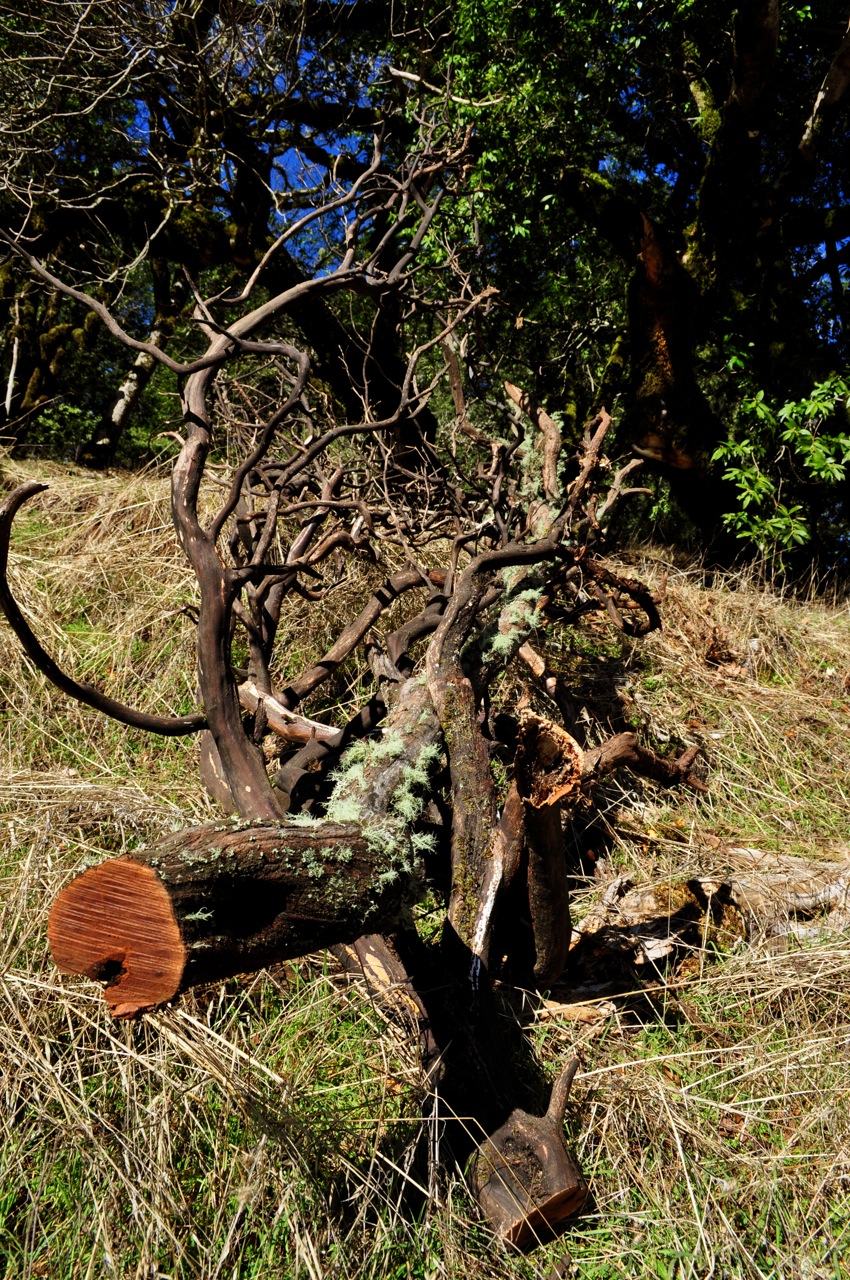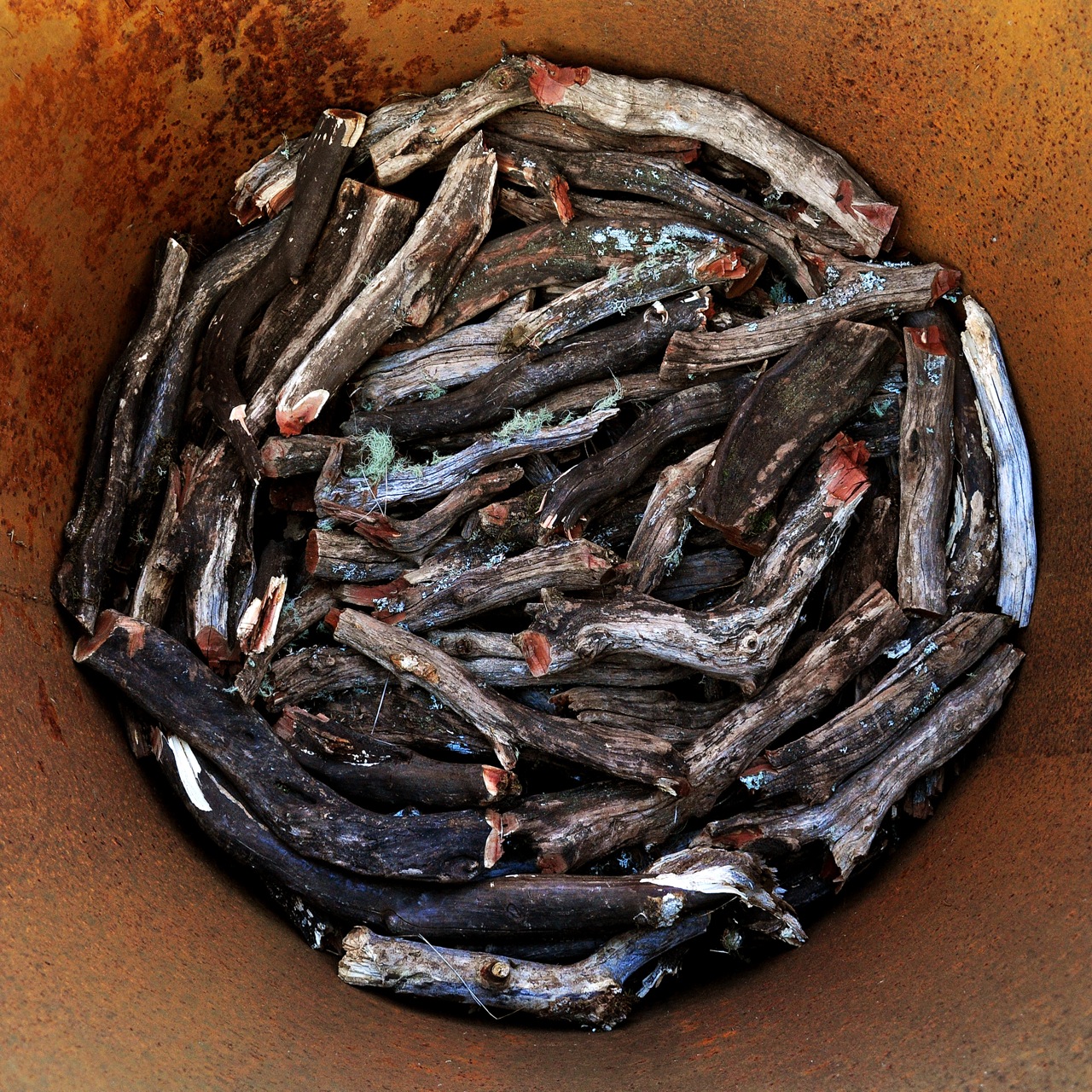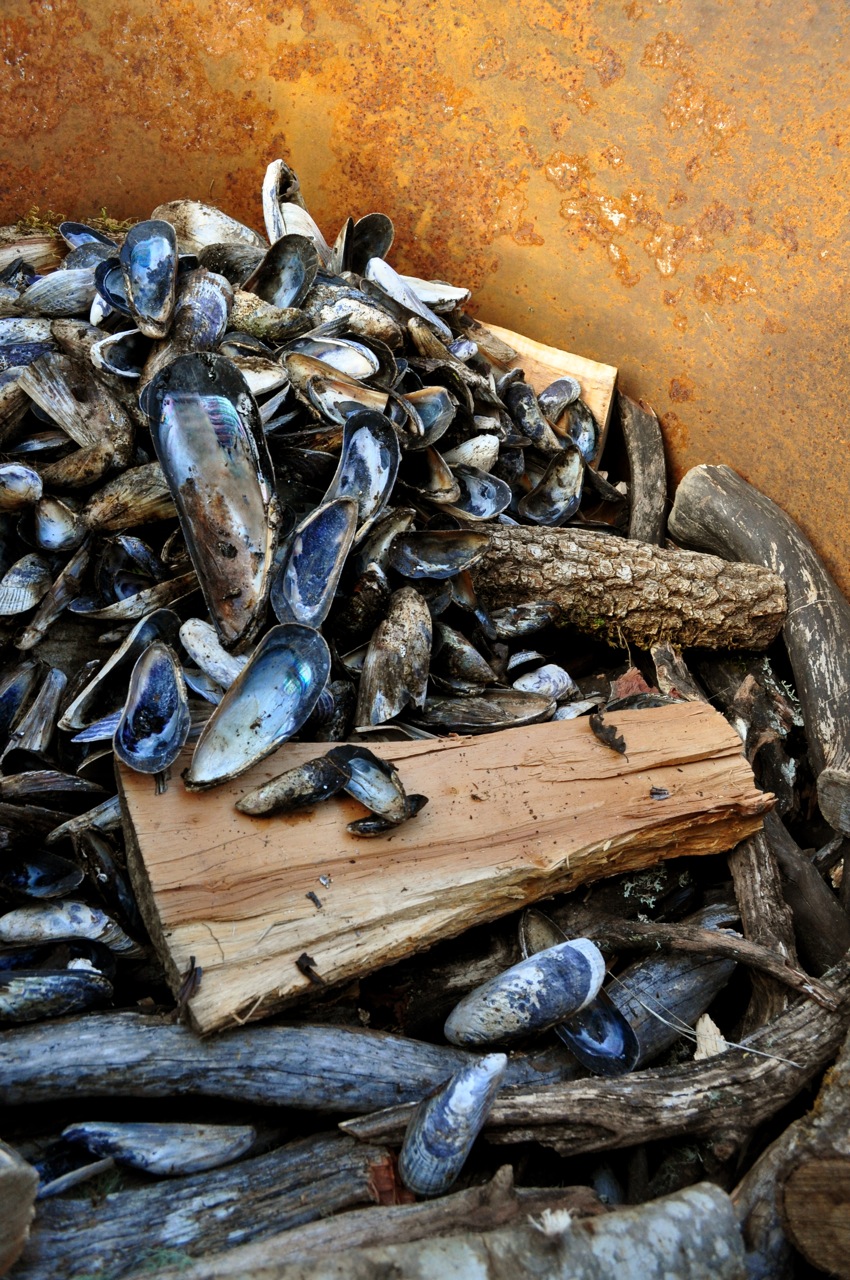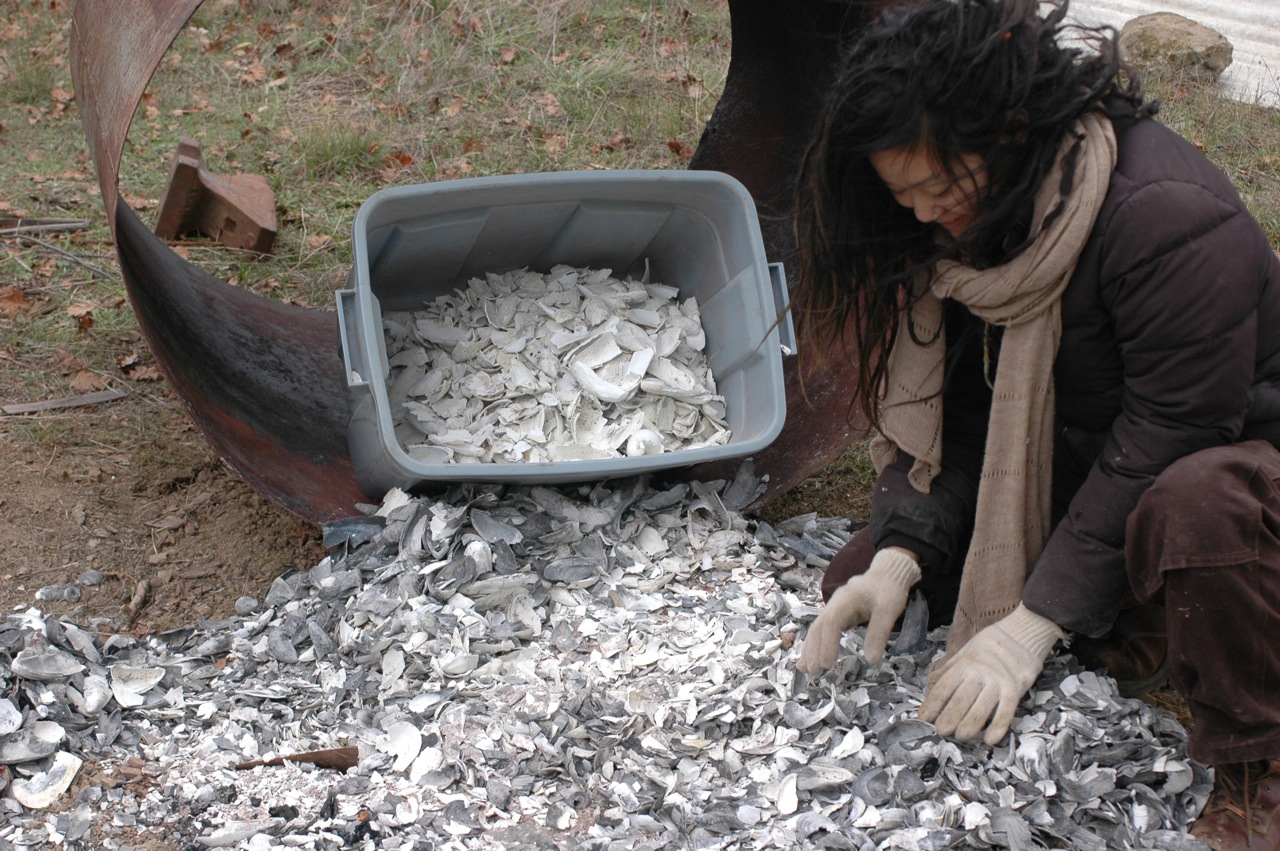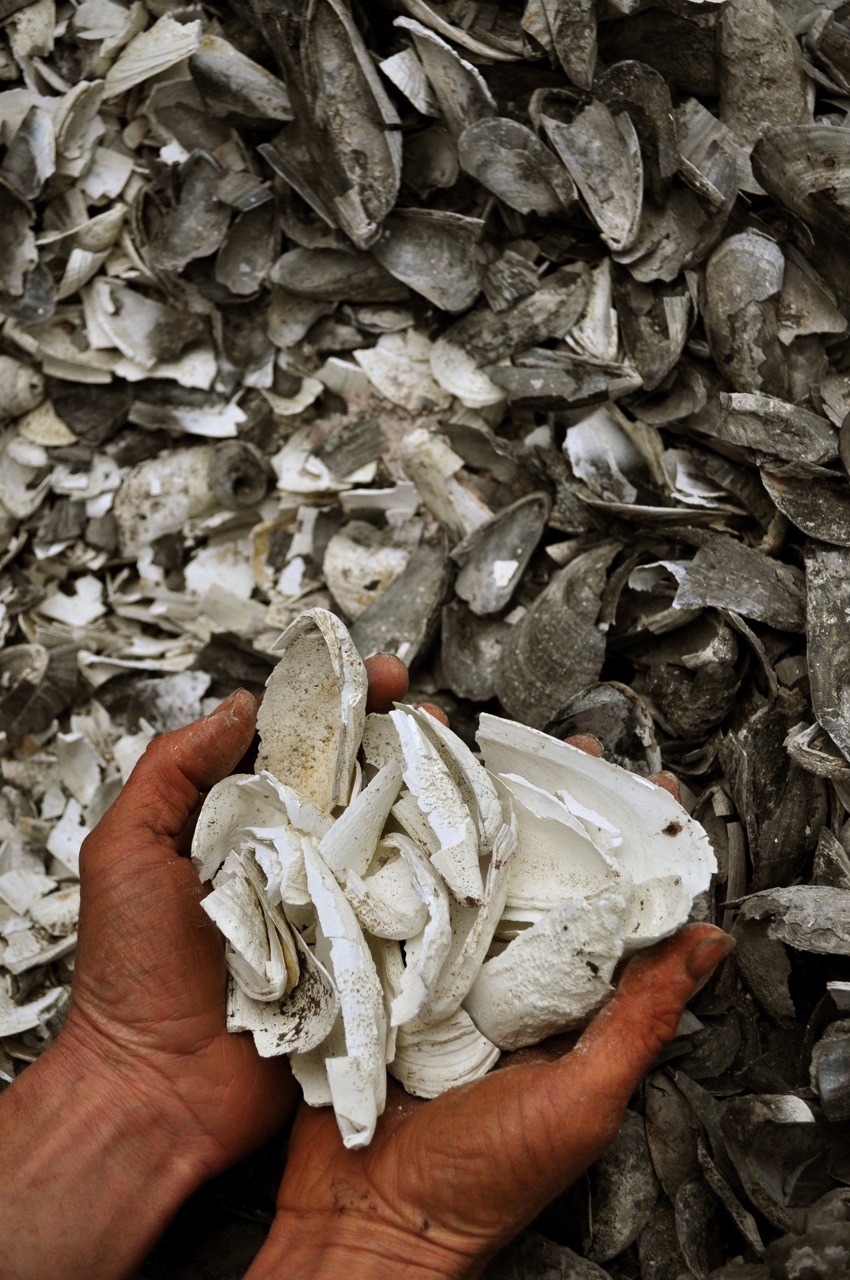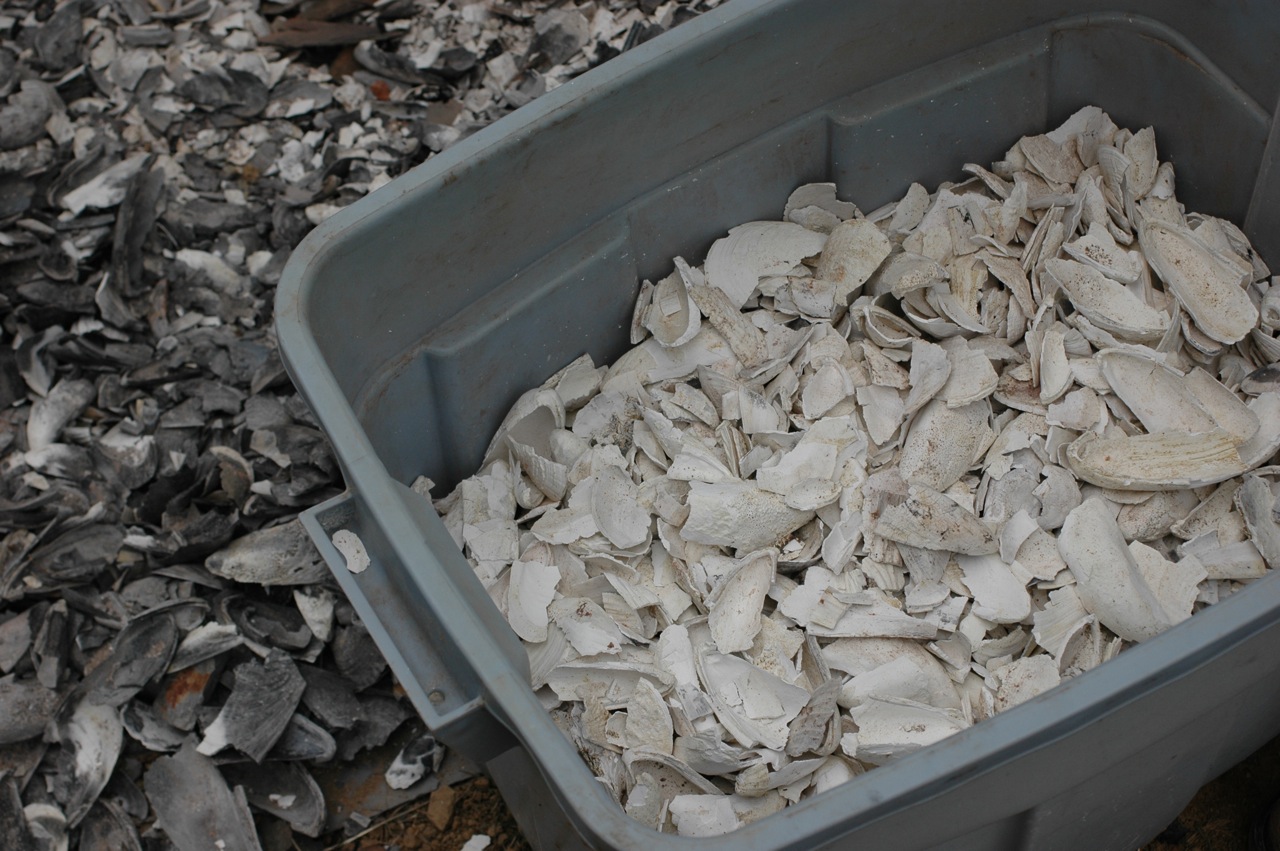 LIME SQUAD! I: A PHOTO ESSAY ON LIME BURNING
LIME SQUAD! I: A PHOTO ESSAY ON LIME BURNING
I've been interested in lime for a while now. I use it in tanning hides and I want to use it in building. Lime is also used in processing corn into hominy as well as masa for tortillas. Doing things completely from scratch always interests me, so project buddy tonia and I set out to burn some lime and see just how much work and fuel is required for what results. The following is a photo essay on our first lime burn, but first a few thoughts on lime, lime burning and lime users.
A BRIEF DESCRIPTION OF THE BASIC PROCESS
Limestone or shells (Calcium Carbonate CaCO3) are burned for a time until they are calcined, that is reduced to Calcium Oxide a.k.a. "quicklime" (CaO). This releases carbon dioxide into the atmosphere.
The lime is now what is called quicklime and it is quick… quick to react with water in an intense chemical reaction creating heat and converting the lime to Ca (OH)2
To make dry hydrated lime, which is more stable than quicklime, the quicklime is sprayed with just enough water to cause it to undergo most of its reaction and crumble into a powder after which it is bagged. Hydrated lime is used as an admixture to increase the workability of portland cement mortars which, even with the addition of lime, are horrid to work with. Other people use hydrated lime as one would use lime putty that is mixed with water to form a lime "paste".
To make Lime putty, the quicklime is mixed with a larger quantity of water whereupon the stuff boils like crazy and turns into calcium hydroxide, Ca (OH)2. Lime putty remains as calcium hydroxide as long as it is kept from air under a cozy blanket of water. Under water it only improves with age.
When the lime paste or putty is used it must be dried slowly. As the lime dries, it reabsorbs the Carbon which was driven away from it in burning back out of the atmosphere turning back into limestone (CaCo3) . So, the lime putty is used wherever it is that you need limestone such as in mortar, lime concrete, plaster etc... How cool is that?
This link is for a diagram of the lime cycle.
I've heard quite a bit of bad press on lime lately from natural builders, but I think if the facts are considered this trend indicates a lack of skill and knowledge on the part of users and/or the use of poor quality lime rather than any shortcoming intrinsic to lime as a building material. After all, there are still buildings standing from Roman times that are built with lime. There are also hella old cob houses in Europe that would be eroded into the ground if not for their protective lime skins. In the book Building With Lime by Stafford Holmes and Michael Wingate there are numerous caveats about how the quality of lime products affects results in building projects and the care required in application and curing. One of these is the recommendation against using hydrated bagged lime in building. The impression I was left with after reading Building With Lime is that hydrated lime is an inferior product produced out of convenience and for specialized uses where powdered lime is required. Freshly burned quicklime has a short shelf life, is highly reactive and is dangerous to handle which probably accounts significantly for its general absence from regular commerce. Add a little water to get most of the dangerous reaction over with and voila- safe inferior product!
Lime putty is considered by traditionalists to be a greatly superior product, but it is hard to come by and what is available is quite expensive to buy as well as to ship. It would be great if it was available locally where limestone or shells occur in sufficient quantity.
tonia and I had both done at least some homework on lime basics and lime burning. I was looking around for local limestone sources (scant, yet promising) but then realized one day that I had a good sized pile of mussel and clam shells from foraging trips to the coast. I always dump my shells in a pile intending to someday grind them up for use as a fertilizer.
The shells were sorted out and weighed out at around 185 pounds. (Note to self: save the work of sorting by not dumping shells under deciduous oak tree.) There were also a few periwinkle shells (a small sea snail) and a few ratty looking abalone shells were also thrown in. (abalone shell dust is known to be toxic so I'm not sure whether this was a good idea or not.) We realized that we didn't really know enough, but decided to throw together a first run so that we could get our feet wet and possibly clarify questions to ask and find answers to.
Manzanita was gathered from dead trees that had been overgrown by larger trees. Manzanita is a pioneer plant. It colonizes new areas where its dense shrubby growth shelters young tree seedlings of other species. The sheltered tree seedling trees grow up like the ungrateful dependents of a wet nurse eventually shading out and killing the Manzanita. The wood sits there for many years without rotting. it has a very high fuel value and produces little ash. Being winter, the wood was somewhat wet which may have been an advantage as its general tendency is to burn very fast and hot while lime should not be burned too hot. Still, as woods go, Manzanita absorbs less water than most, dries back out quickly and burns pretty well when wet.
Half an old water tank with the bottom and top cut out was chosen for a kiln of sorts. Originally bricks were considered, but there were not enough about and in retrospect loosely stacked bricks seems a poor idea while mortaring them up with clay seems like too much work for a one shot kiln.
A trench was dug to admit air to the center of the kiln and allow for ignition from the bottom. A carefully laid crisscross of twigs and split pitch saturated fir was constructed to insure a quick and easy ignition. This starter pile was then filled in from the sides. The slate roofing scraps were to prevent excessive steam rising as the ground was wet and rain was expected, as well as to make a clean dry floor for the burned shells to settle on.
Fuel was laid as densely as possible by careful stacking, but in retrospect, more care might have been taken in some sections. It was somewhat difficult to reach in and place fuel carefully, but I think it is probably important.
as the pile progressed, larger pieces of wood were placed in the kiln to form a flat surface to receive the shells.
The shells were placed in two layers. Originally we had discussed keeping the shells to the center of the pile. This idea was not carried out however and the shells were pushed all the way to the edge of the kiln. With some experience now, I'm inclined to think that next time it would be best to form a flat layer of wood as we did, but then form a raised rim of firewood around the edge to contain the shells… something like building a gravy volcano in your mashed potatoes.
The second layer of shells was left on top of the wood. In retrospect I think this was a bad idea and they should have had a layer of wood on top of them. I thought it was okay because there are traditional burns that put the limestone or shells on top, but Jeff Price at Virginia Lime Works said that those traditional open burn piles are built carefully in such a way that they collapse in on the shells. Leaving these shells on top probably cost us 50% of the shells being incompletely burned. Possibly too, with a proper kiln that had some insulation or at least some mass that could heat up or a narrower opening? the shells might be able to be on top without a layer of wood. In this case though, I think a layer of wood on top would probably be better.
The pile was lit from underneath with a torch of dry grass and slivers of pitch wood bound to a long stick. It worked great and spread rapidly into the carefully laid fire base.
We had decided to wait until dark to light the kiln as I knew there was likely to be a great quantity of smoke and steam produced. Good thing. I was right and I'm sure it would have worried the neighbors greatly if not the fire department although it was quite wet out. I wouldn't want to do this in our fire prone area in any but the very wet seasons. The first 45 minutes or so were all smoke and steam though the side of the barrel near the air entrance was glowing red.
At some point it was decided that we needed air on the other three "sides" to get things burning evenly. Holes were dug under the container just enough to let some air in. The air flow was controlled with broken pieces of roofing slate.
The fire was cool enough by morning to start sorting and rain was expected, so we got right to work. The burn was only partially successful in the goal of producing lime in that much of the shell was under-burned. If making lime had been the sole goal we would have spent more time in researching and such. The primary goal was to get our feet wet (dry?) and stimulate our questioning minds before bugging anyone with too many questions.
The shells that did not burn enough were darkly colored. The fully calcined shells were white all the way through feeling almost painfully dry like fresh fired pottery. Calcined shells are very light in weight and ravenously thirsty for some water which they will react with even in the quantities available in the atmosphere. In short, freshly burned quicklime is unstable and should be processed immediately.
I was guessing that about 1/3 rd of the shells burned enough. Considering that the shells lose a lot of weight and the end result was 40 pounds maybe I wasn't too far off base on that guesstimate. I'm guessing that a final layer of wood on top, laying the shells in such a way that they are completely surrounded by wood, and or some insulation or at least a heatable mass to the kiln could shift that into a more acceptable figure.
DON'T MISS PART TWO, SLAKING THE LIME! WOOHOO!
Having done this one simple, but largely successful lime burn, I am encouraged by the results. I'm hoping that, aside from collecting the stone or shells, two people will be able to do a 200 lbs shell burn in one day including firewood collection. How much this will yield is unknown, but I'm hopeful that it will be enough to make it "worth it". I have my own ideas about what is and isn't worthwhile in terms of work v.s. returns. It is difficult in the society we live in to step out of the monetary global economy enough to see value that is not directly weighed in dollars and cents terms regardless of other factors such as personal investment and satisfaction, meaningful work, broader impact, pride in workmanship and so on. Neither view is correct in the strictest sense, but they rather reflect our values don't you think? And because the economy we live in is so persistently invasive and all encompassing in most of our lives, it shapes our values without us even knowing it causing us to use an assumed "bottom line" as a measure of worth for nearly everything we do. The trick is not so much whether we can notice this phenomenon, but rather whether we can actually embody an alternative idea to the extent that it can manifest change in our behavior.
Building things with my own lime burned here on the land rubs me right on many levels and that feeling pulls a lot of weight in deciding whether its "worth it" or not. I'm hoping that I can actually make another significant impact in bringing the pieces of my life home to roost outside of a network of supply and demand that I can't possibly grasp, understand or in the long run rely on.
Currently people use mostly concrete where lime was once used. Lime however has some benefits that are overlooked by modern builders. Concrete also has some benefits, but is more costly and energy intensive to produce. A lime revival seems to be underway, though most of it in the US is still centered around hydrated lime paste. The more encouraging part is the few dedicated people like those at Virginia Lime Works who are following traditional methods of production and use out of a sense of integrity. I asked a Guatemalan friend what kind of lime they used in building and she said they just go buy the rock from a quarry cheap and burn it themselves. I like that.
I think from here we will probably try another burn to correct some perceived mistakes and possibly build a better kiln designed to be re-used over and over. As far as kiln size goes, I think I would favor the 200 to 300 pounds of shells (or whatever the limestone equivalent would be) range. I have a particular interest though in figuring out how to make lime and bio-char at the same time. People now are burning wood just to make bio-char without even using the heat. What if we could burn biochar while making lime!?! That would be awesome! I have no idea of the real feasibility of this idea, but it is intriguing anyway.


